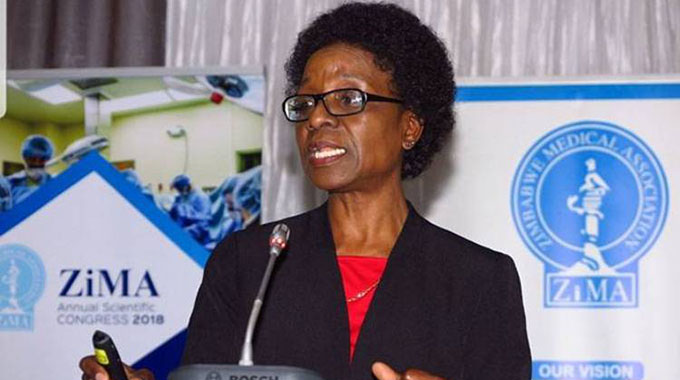Vaccination rates continue to slow

Herald Reporters
While the third wave of Covid-19 infection continues to trickle down to just 4,8 percent of its mid-July peak, the vaccination rate is also continuing to slow with 286 134 jabs given last week between Sunday and Saturday, down for the third week running.
The week before saw 289 892 jabs and last week’s total was just over 55 percent of the 517 933 record seen in the third week of August, according to figures from the Ministry of Health and Child Care.
A declining sense of urgency has seen the number of people coming forward for their first jab falling as the third wave receded and a lot of people decided to put off to a more convenient time their entry into the national vaccination programme.
The increased vehemence of the fake social media onslaught from American right-wingers is also having some effect.
Over the past three days yet another 1,5 million doses of Sinopharm vaccine arrived from China as Government readies to add teenagers on the inoculation programme.
The latest deliveries takes the total number of doses in the country to over 10 million.
In an interview yesterday, Chief Coordinator for the national response to Covid-19, Dr Agnes Mahomva said the Government would continue procuring more vaccines.

Dr Mahomva
“We have no intention to go without vaccines. We are on course to achieve herd immunity. We have been strategic from day one. Treasury has continued mobilising resources. We are quite excited with what we have done and we will not look back,” said Dr Mahomva.
Addressing journalists last Friday after receiving the consignment of 500 000 doses, Deputy Minister Mangwiro said the Medicines Control Authority of Zimbabwe (MCAZ) gave a conditional authority for vaccination of children.
“The condition is that the Ministry of Health and Child Care shall conduct a Phase Three clinical trial first before rolling out the vaccination; and the Ministry is in the process of implementing the MCAZ conditions and once that is complete, the rollout will begin.”
Zimbabwe is now extending the vaccination campaign to teenagers from 14 to 17 who were not previously catered for in the initial plan after scientists approved it was safe to inoculate this age group.
The vaccination of children follows satisfactory progress in the ongoing inoculation exercise for the adult population which has won several international plaudits and endorsements from United Nations agencies including the World Health Organisation.
He implored parents to take their children for vaccination if their chance arrives and insisted that the shots were a proven scientific record for protection against the Covid-19 virus.
“President Mnangagwa said we must all go and get vaccinated. The disease might have slowed down, but other countries are already experiencing a fourth wave and as the waves go on they become more severe and more brutal.
“The only solution that is scientifically-proven now is vaccination, let us all go out in our numbers and get vaccinated, the vaccines are there and they are for free,” said Dr Mangwiro.
Dr Mangwiro also implored those with underlying conditions to accept the vaccines, and said those with sugar diabetes and high blood pressure will be stabilised by doctors before being vaccinated.
Last week saw 148 013 Zimbabweans line up for their second jab, taking the total of fully vaccinated to 1 849 006 by late Saturday afternoon. This is 12.33 percent of the entire population of Zimbabwe estimated at around 15 million. At some stage this week the total of the fully vaccinated will go over 2 million, as more of the first dosers from the high rates in the second half of August finish their four week waiting period.
But the number of Zimbabweans entering the programme last week by lining up for the first jab was only 138 121, the first time since the middle of August that second dosers exceeded the number getting their first dose.
By Saturday 2 836 753 Zimbabweans had taken their first dose, about 18,91 percent of the total population.
This means Zimbabwe is still the best in the region and the third best in continental Africa when looking at the figures for the percentage who have received at least one dose, after Morocco and Tunisia, but only just as South Africa has now inched up to 17,83 percent. The four tiny island states of Seychelles, Mauritius, Cape Verde and Comoros also have vaccination rates ahead of Zimbabwe, making the country the seventh best in the African Union.
Zimbabwe has so far administered, in first and second jabs, 4 685 759 doses, to give 31,24 doses per 100 people, an impressive rate by African standards.
Supplies of vaccine are now being delivered faster and stocks are exceptionally good. At the same time the Ministry of Health and Child Care continually expands the distribution putting in more public health teams, who vaccinate for free, as well as allowing more private hospitals, doctors and pharmacies to administer doses for a small fee, in theory set at $400 although many charge a little more. The vaccines for the private system are still free and the charge is just for the jabbing.
This means that the fall in numbers of doses being administered weekly is purely the result of fewer people coming forward, not because there is a shortage of vaccine or a bottleneck at the distribution end. From the third week of August we know we can administer more than 500 000 doses a week, or 2 million a month, and with the improvements put in place by the Health Ministry that is now higher.
Harare and Chitungwiza lead the Zimbabwean pack with 499 842 first jabs by Saturday between them and another 334 602 second doses for a total of 834 444 doses between them. While Harare Metropolitan is easily the most populous province the vaccination rate is high.
Manicaland has 360 488 first doses and 238 169 second doses, with Mashonaland West on 319 695 first doses but 199 880 second doses. Midlands has 298 607 first doses and 174 715 second doses; Mashonaland East 289 857 first and 204 952 second; Masvingo 248 878 first and 144 515 second; Bulawayo Metropolitan 235 563 first and 174478 second giving it more total doses than Masvingo but fewer first doses; Matabeleland North 226 306 first and 145 101 second; Mashonaland Central 209 256 first and 139 827 second; and Matabeleland South, the province with the lowest population, 148 277 first and 92 766 second.
So far as Covid-19 infection rates go, the rolling seven-day average is now 113 with 795 new infections recorded last week. The death rate is still hovering around an average of 10 a day, with 70 deaths last week. Death rates follow two or three weeks behind infection rates as it takes some time for an infected person to become very ill.
While the infection rate is now just 4,8 percent of the mid-July peak it is still three times the rate seen before the start of the third wave, hence the need for great care and the calls for vaccination.










Comments